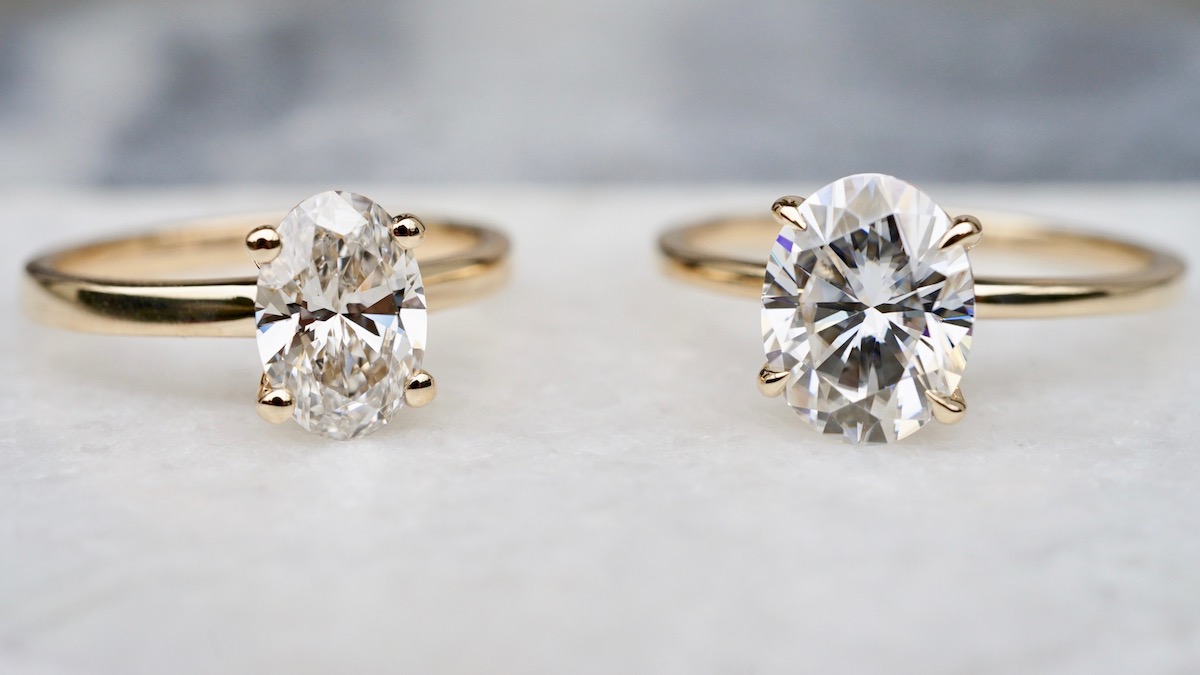When shopping for fine jewelry, particularly engagement rings or statement pieces, the decision between diamond vs moissanites often comes up. Both stones offer beauty and sparkle, but they differ in composition, price, and origin. Meanwhile, lab made diamonds have gained tremendous popularity as a third alternative, combining the appeal of real diamonds with ethical and affordable production. This article explores the key differences between diamond and moissanite, while highlighting the growing market for lab made diamonds.
What Are Diamonds and Moissanites?
Diamonds are naturally occurring gemstones composed of carbon atoms arranged in a crystal lattice. Known for their unmatched hardness and brilliance, diamonds have long been the standard for luxury jewelry. On the other hand, moissanites are made of silicon carbide. They were first discovered in a meteor crater and later synthesized in laboratories to be used in jewelry. Moissanites are celebrated for their fire and brilliance, often appearing even more sparkly than diamonds under certain lights.
The Comparison: Diamond vs Moissanites
When considering diamond vs moissanites, several factors come into play. Diamonds are prized for their unparalleled hardness, scoring a 10 on the Mohs scale, which means they resist scratches better than almost any other material. Moissanites are slightly softer, rating about 9.25, but they remain highly durable for everyday wear.
In terms of sparkle, moissanites display a different kind of brilliance with more colorful flashes, whereas diamonds reflect a sharper, white light brilliance. This difference affects personal preference—some prefer the fire of moissanites, while others seek the classic sparkle of diamonds.
Price is a major distinguishing factor in the diamond vs moissanites debate. Moissanites are significantly more affordable than natural diamonds, often costing a fraction of the price. This affordability makes moissanites popular for budget-conscious shoppers who still want a dazzling gemstone.
Lab Made Diamonds: The New Contender
In recent years, lab made diamonds have surged in popularity as a third option that bridges the gap between natural diamonds and moissanites. These diamonds are grown in controlled laboratory environments using advanced technology such as Chemical Vapor Deposition (CVD) or High Pressure High Temperature (HPHT) methods.
Unlike moissanites, lab made diamonds are chemically and physically identical to mined diamonds, offering the same hardness, brilliance, and durability. However, because they are created in labs, they come with a lower price tag and a more sustainable production process. For those torn between diamond vs moissanites, lab made diamonds provide an authentic diamond experience without the high cost or ethical concerns of mined stones.
Environmental and Ethical Considerations
One of the main reasons buyers choose lab made diamonds over natural diamonds or moissanites is environmental and ethical responsibility. Mining diamonds involves significant ecological disturbance and, in some cases, questionable labor practices. Lab made diamonds avoid these issues by using less energy and producing virtually no environmental damage.
Moissanites, being lab-created silicon carbide, also have a smaller environmental footprint compared to mined diamonds. However, they are not diamonds, and some consumers prefer the authenticity and value of lab made diamonds despite their synthetic origin.
Visual Differences and Certifications
Visually, it can be challenging for the untrained eye to distinguish between diamonds and moissanites, especially when set in jewelry. However, gemologists use specialized tools to identify them based on refractive properties and inclusions.
When comparing diamond vs moissanites, certification also matters. Diamonds, whether natural or lab made diamonds, often come with grading reports from respected labs such as GIA or IGI, which detail the 4Cs (cut, color, clarity, and carat). Moissanites do not have the same standardized grading system but may come with their own quality assurances.
Choosing the Right Stone for You
Deciding between diamond vs moissanites and considering lab made diamonds ultimately depends on personal preference, budget, and values. If you want the traditional prestige and investment value of diamonds, lab made diamonds are an excellent choice combining authenticity and sustainability.
If budget is a primary concern but you want dazzling sparkle, moissanites offer great value and eye-catching fire. For those prioritizing ethics and environmental impact, both moissanites and lab made diamonds offer compelling alternatives to mined diamonds.
Conclusion
The choice between diamond vs moissanites has never been more nuanced. With the advent of lab made diamonds, consumers now have more options than ever to balance beauty, cost, and ethics. Whether you select a natural diamond, a moissanite, or a lab-grown diamond, understanding these differences helps you make an informed decision that aligns with your style and values.


